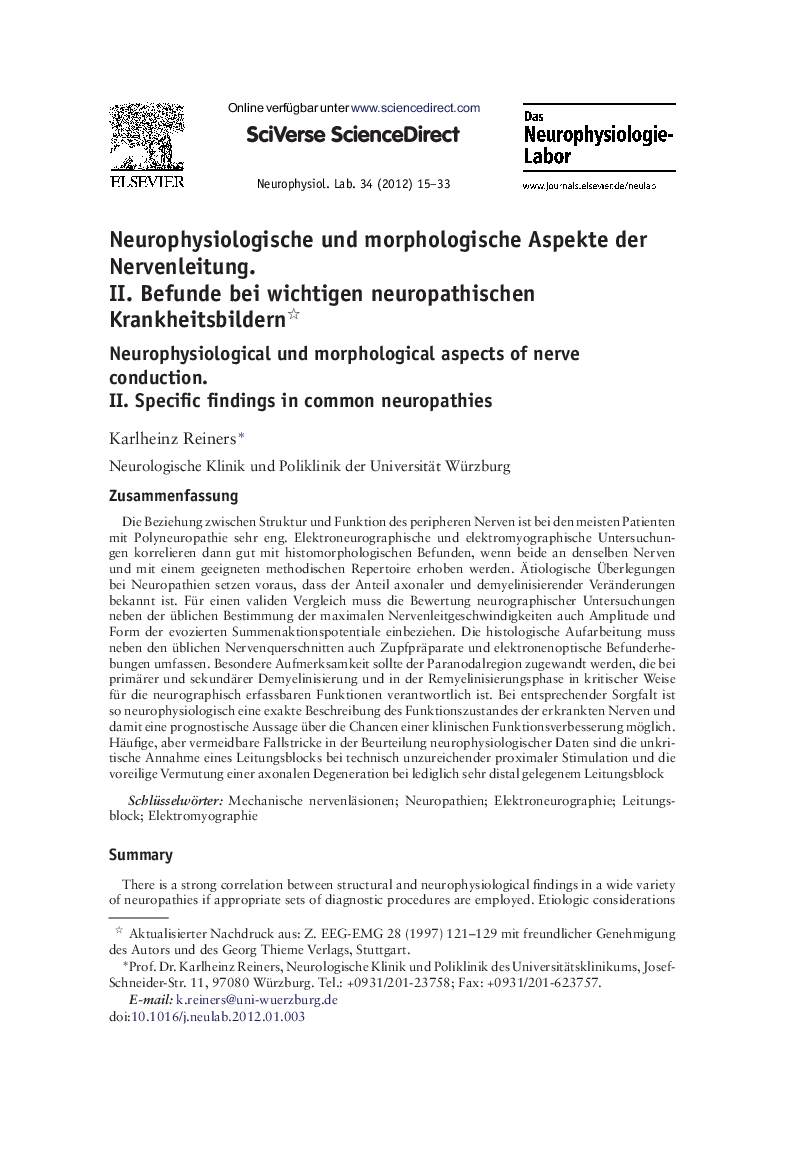| Article ID | Journal | Published Year | Pages | File Type |
|---|---|---|---|---|
| 2682018 | Das Neurophysiologie-Labor | 2012 | 19 Pages |
Abstract
There is a strong correlation between structural and neurophysiological findings in a wide variety of neuropathies if appropriate sets of diagnostic procedures are employed. Etiologic considerations heavily rely on the dissection of axonal damage and demyelination. Histologically, the work-up of a nerve biopsy should not only focus on transverse sections but should also include teased fibre studies and electron microscopy. Particular emphasis should be put on axon-myelin junctions at paranodal regions. Although critically involved in generating gross neurophysiological nerve dysfunction in primary as well as secondary demyelination, paranodes have long been neglected by morphologists. Neurophysiological studies in patients with neuropathy should be performed as early as possible and repeated in the course of the disease. Routine nerve conduction techniques must be complemented by F-wave studies and by a careful assessment of amplitudes and composition of compound action potential amplitudes. Serial studies not only give a comprehensive view of the current status of nerve function but also provide a valuable prognostic means. There are some pitfalls, however: The diagnosis of nerve conduction block must not be made without taking innervation abnormalities into account or without ensuring supramaximal stimulation. In the first two weeks of inflammatory neuropathies, a very distal conduction block has to be considered if compound muscle action potential amplitudes are low in the absence of denervation potentials in the electromyogram.
Related Topics
Life Sciences
Neuroscience
Neurology
Authors
Karlheinz Reiners,
